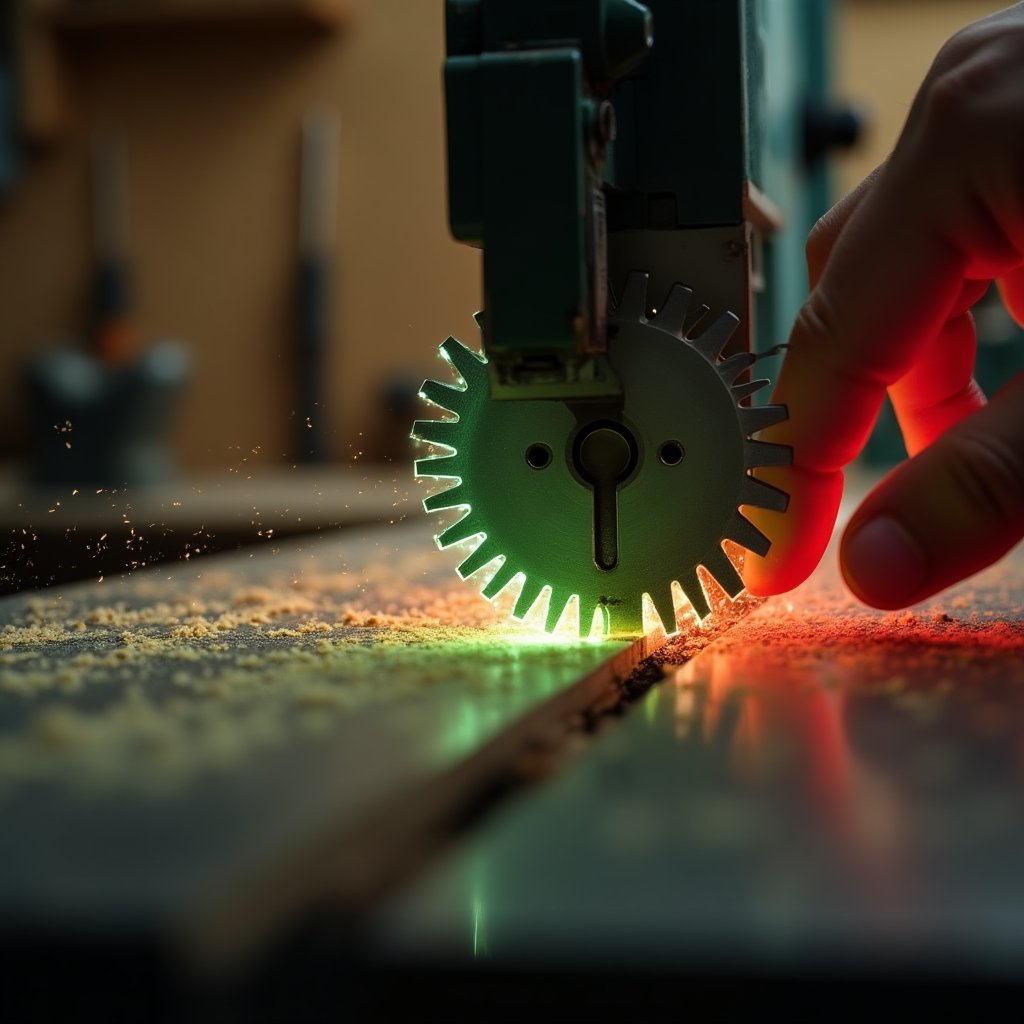For years, I thought I knew how to use a band saw. But let me tell you, I was wrong. Dead wrong. I was just hacking out rough shapes, cutting close to my lines but not too close, and then spending hours sanding everything down. Sound familiar? Well, everything changed when I stumbled upon a technique that revolutionized my woodworking game. And guess what? It’s not some secret magic trick—it’s all about steering with the back of the blade. Intrigued? You should be. This is the kind of tip that makes you slap your forehead and say, "Why didn’t I think of that?"
In this article, we’re diving deep into a technique shared by Stumpy Nubs (James Hamilton), a woodworking guru who’s been a game-changer for countless DIYers and pros alike. If you’ve ever struggled with wobbly cuts, uneven curves, or just plain frustration with your band saw, this is for you. By the end of this, you’ll be cutting like a pro—no sanding required.
Why You’ve Been Using Your Band Saw Wrong
Let’s face it: most of us treat the band saw like a glorified jigsaw. We cut close to the line, then spend way too much time sanding or cleaning up the edges. But here’s the kicker: you don’t have to. The secret lies in how you steer the blade. Most people focus on the teeth at the front of the blade, but that’s where things go sideways (literally). Instead, the real magic happens at the back of the blade.
When you steer with the back of the blade, you’re essentially using the blade’s natural geometry to your advantage. The curve cut by the blade is wider than the blade itself, thanks to the set of the teeth. Each tooth is bent slightly to one side, alternating left and right down the blade. This creates a wider kerf (the cut made by the blade), which leaves room for the back of the blade to move freely. By focusing on the back, you can guide the blade with precision, making straight cuts or following curves like a boss.
How to Steer with the Back of the Blade
Here’s the step-by-step breakdown of how to master this technique:
- Focus on the Back: Instead of fixating on the front teeth, keep your eyes on the back of the blade. This is your new guiding star.
- Light Touch: Gently press the back of the blade against the side of the curve. You’re not forcing it—just letting it glide.
- Use the Curve as a Fence: As you cut, the curve itself acts as a guide for the back of the blade. It’s like having an invisible fence keeping your cut on track.
- Adjust as Needed: If you need to turn the blade, twist it slightly. But remember, less is more. A light touch is all it takes.
Here’s the best part: this technique works with any blade, on any band saw. Whether you’re using a 3/4-inch blade or a skinny 1/4-inch one, the principle remains the same. Sure, wider blades are easier to control, but even a narrow blade can deliver precision cuts if you know how to steer it.
Why This Technique is a Game-Changer
Let’s talk about the benefits. First, your cuts will be smoother. No more jagged edges or wobbly lines. Second, you’ll save time. Say goodbye to endless sanding sessions. And third, you’ll gain confidence. Once you master this technique, you’ll find yourself reaching for your band saw more often—and getting better results every time.
But don’t just take my word for it. Watch Stumpy Nubs in action:
Tools of the Trade
Now, let’s talk about the tools that make this technique even better. First up, the band saw itself. Stumpy Nubs uses a Harvey band saw with a nickel-plated table. Why nickel-plated? Because it’s four times harder than cast steel, which means it’s scratch-resistant and rust-proof. Plus, it looks amazing. Who doesn’t love a tool that’s both functional and stylish?
Another game-changer is the Bow Feather Pro, a featherboard that’s unlike anything you’ve used before. Designed by two brothers in their garage, this featherboard uses a unique curved shape and living hinge to provide smooth, even pressure. But here’s the kicker: if the saw kicks back, the Bow Feather Pro locks the board in place, making it one of the safest featherboards on the market. It’s a small investment that could save you a lot of headaches—and fingers.
Pro Tips for Perfect Cuts
Before you run off to try this technique, here are a few pro tips to keep in mind:
- Blade Width Matters: Wider blades are easier to control, especially for beginners. Start with a 3/4-inch blade if you can.
- Keep Your Saw Tuned: A well-tuned band saw is crucial for precision cuts. Make sure your guides are properly set and the blade is tracking correctly.
- Practice Makes Perfect: Like any new skill, this takes practice. Start with scrap wood and work your way up to more complex projects.
Why This Matters
At its core, this technique is about more than just cutting wood. It’s about taking control of your tools and your craft. It’s about breaking free from the limitations of conventional thinking and discovering new ways to achieve precision and efficiency. And let’s be honest—it’s about saving time and frustration so you can focus on the fun part: creating something amazing.
So, what are you waiting for? Grab your band saw, fire it up, and start steering with the back of the blade. Trust me, once you try it, you’ll wonder how you ever lived without it.
Join the iNthacity Community
If you’re as excited about this technique as I am, I’d love to hear from you. Drop a comment below and let me know how it worked for you. And if you’re ready to take your woodworking skills to the next level, why not join the iNthacity community? We’re a vibrant group of makers, dreamers, and doers who are passionate about sharing knowledge and pushing the boundaries of what’s possible. Apply to become a permanent resident—or even a citizen—of iNthacity, the "Shining City on the Web."
And don’t forget to like, share, and subscribe. Let’s keep the conversation going and build something incredible together.
Final Thoughts
Woodworking is more than just a hobby—it’s a journey. And every journey is made better with the right tools, techniques, and community. So, what’s your next project? Are you ready to take your band saw skills to the next level? Or maybe you’ve got a tip or trick of your own to share. Whatever it is, I can’t wait to hear about it. Let’s make something amazing together.
Wait! There's more...check out our gripping short story that continues the journey: The Whisperer
Disclaimer: This article may contain affiliate links. If you click on these links and make a purchase, we may receive a commission at no additional cost to you. Our recommendations and reviews are always independent and objective, aiming to provide you with the best information and resources.
Get Exclusive Stories, Photos, Art & Offers - Subscribe Today!


























Post Comment
You must be logged in to post a comment.